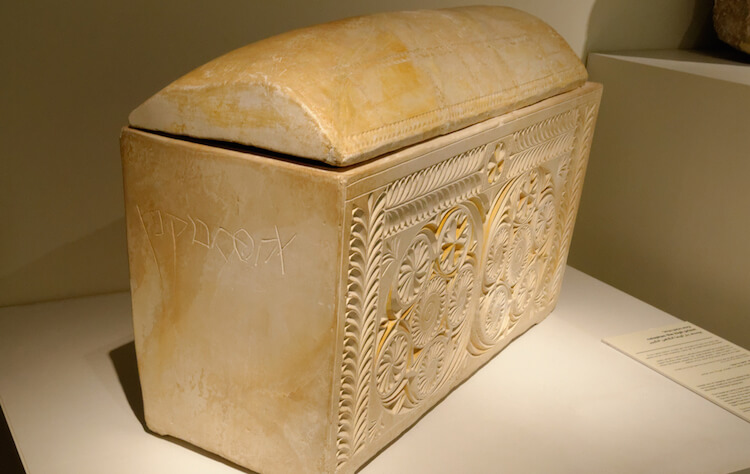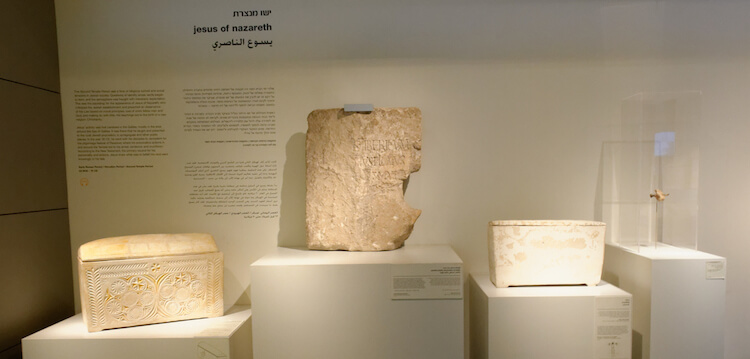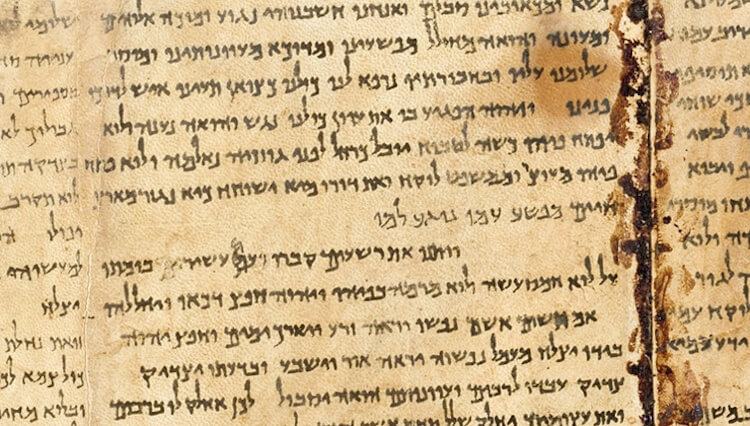Easter and Christmas always bring a slew of television specials claiming to find some new archaeological connection to Jesus. Most are hype and even attempt to discredit the biblical account.

(Photo: Ossuary of Joseph son of Caiaphas. Courtesy of the Pictorial Library of Bible Lands)
But occasionally archaeology gives us a true connection to Jesus, and the results are tremendously affirming. The Israel Museum in Jerusalem has devoted a small corner of the museum to archaeology connected to Jesus of Nazareth.
The good folks at SourceFlix.com put together a short video that highlights several of these archaeological finds that relate to Jesus Christ—and the Passion Week in particular.
I’ll also explain why they’re significant to us.
Heel Bone of Crucified Man
The Romans crucified thousands of people. Amazingly, this heel bone with a spike still penetrating it represents the only archaeological evidence for the practice.
Pilate Inscription
An Italian team discovered this inscription at the Caesarea theater in 1961. The large stone referred to “Pontius Pilate, Prefect of Judaea.” Pilate was the Roman governor who condemned Jesus to death (Matthew 27:22).

(Photo: Jesus of Nazareth exhibit in Israel Museum, Caiaphas ossuary, Pilate inscription, crucified man. Courtesy of the Pictorial Library of Bible Lands)
this link in Google Street View. This section of the museum features archaeology related to the Second Temple period.
Caiaphas Ossuary
The ornate ossuary (pictured at the top of this post), discovered in Jerusalem, is that of Joseph Caiaphas, the high priest involved in the trials of Jesus (Matthew 26:57). The ossuary held the bones of a 60-year-old male and the box’s inscription reads: “Joseph, son of Caiaphas.”
Regarding the Pilate Inscription and the Caiaphas Ossuary, the book, Chronicles of the Land: Archaeology in The Israel Museum Jerusalem, makes an important observation (page 120):
It is extremely rare to discover archeological finds relating directly to historical personages. Thus the discovery of two items relating directly to important figures associated with the arrest, trial, and crucifixion of Jesus is truly exceptional.
The Great Isaiah Scroll
The Dead Sea Scrolls aren’t mentioned in the video, but I believe they should be. Why? Because prior to the discovery of the scrolls, critics claimed that Isaiah’s remarkable predictions of history and the suffering of the Messiah had to have been written after the fact—because they were so accurate.
The Dead Sea Scrolls were copied a century before Jesus was born—faithfully preserving Isaiah’s prediction of the Messiah’s death and resurrection.

(Column 44 from the Great Isaiah Scroll refers to the suffering of the Messiah. Image: Public Domain.)
Open the site and click on the scroll, and up pops a window that allows you to search through the scroll. Mouse over the Hebrew text at column 44 and the cursor tells you the verse you’re seeing. Find chapter 53:6 and click it.
Want a high-res digital copy of the whole scroll? You can download it here.
Tel Dan Stele
I add this because the video does, but this doesn’t directly relate to Jesus. However, Jesus was from the “House of David” (Luke 1:69; 2:4). Archaeologists unearthed fragments of this large, basalt stele that boasted of the Aramean King Hazael’s victory over Israel (2 Kings 8:12-13) and the “House of David.” This represents the only text outside of the Bible that refers to King David—proving he was no mythical Robin Hood.
So What?
These bits of wood, stone, skin, and bone may seem like relics of ancient, irrelevant events. But they affirm that the biblical faith of Christians stems from historical events and not from mythology, mystery, or legend.
We point to the historical events of Jesus’ death, burial, and resurrection at Jerusalem as the basis of our faith (1 Corinthians 15:14).
Without historical facts, faith is absolutely futile—because it isn’t real. (Tweet that.)
The Bible isn’t a history book, but what it says about history is true. Archaeology supports that history.
Tell me what you think: What difference does archaeology make to Jesus? To leave a comment, just click here.
